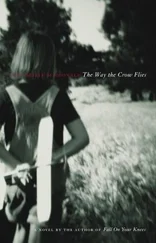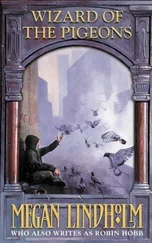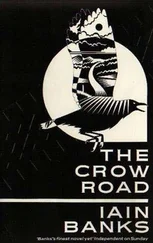To remind people of this point the Ruler decided to address the nation.
The performance, carried live on all the airwaves, was visually compelling, and people talk about it to this day. His government knew, he told the nation, that certain malcontents, the self-styled Movement for the Voice of the People, had duped university students into scattering plastic snakes at gatherings. He wanted to remind the nation that, in direct response to their wishes, the government had long ago banned all political parties. In Aburlria there was only one party, and the Ruler was its leader. Let it be known to the entire world, he declaimed, that from this minute the Movement for the Voice of the People ceases to exist aboveground or underground. The Ruler was the sole voice of the people, and they loved it so.
To fight the lies of these terrorists he ordered the formation of a new squad, His Mighty Youth, and he asked all school and college students to join and become the Ruler’s youthwings. Their main responsibility was to tell all the land that his might was the might and the light of the nation. The wingers would teach the catechism: Aburlrians can never have a party except the Ruler’s Party or worship political idols imitating the Ruler. On His Mighty Service would be their motto, and this would be inscribed on all their badges, stationery, clothes, and vehicles. OHMS.
The Ruler paused to allow that to sink in within the minds of his televiewers. And then came what has become the talk of all Aburiria and probably the basis for the rumors of snakes, devil worship, and supernatural powers. Emphasizing the warning he was about to issue, he pointed at the cameras with his club-shaped staff as if at the terrorists of the Movement for the Voice of the People. He, the Ruler, would outsnake all their plastic terrorist snakes with real ones. In biblical times, it was the Mosaic snakes that swallowed the Pharaonic ones. Today in Aburiria, it is the Pharaonic snakes that will swallow all of you who think that you are the new Moses.
And suddenly he raised the club higher in the air as if ready to throw it at any and all self-styled Moseses. The cameramen ducked behind their cameras, and all at once, as if hit by the same object simultaneously, every television screen in the country split into seven pieces. The viewers did not know whether the Ruler had actually thrown the club or simply had the power of mind to disintegrate their screens; disagreements remain to this day. Whatever the truth, the television performance did inspire a new snake dance, which became all the rage so that wherever and whenever two or three young people met, they would move their bodies-heads, torso, and hands-in serpentine motions as they sang:
The pot I made is broken
Little did I know that freedom
Would bear a viper and a devil
At first the Ruler did not mind the rumors about devils and snakes because he hoped that these would only deepen the fear among his enemies and strengthen his hold on Aburlria. But when his M5 told him that far from creating fear the rumors were actually making people have a low opinion of his reign, verging on contempt, and that this might lessen people’s support for Marching to Heaven, the Ruler saw the need to take steps to deny these rumors their power. But which action would bring about the biggest impact?
As a schoolboy in a colonial classroom long ago, he had come across stories of an ancient king of Babylon who used to appear among the populace disguised as one of them, and when later the citizens found out who he was they were amazed and flattered. A king had walked among them. The image had faded in time, but it sprang back to life, and when he tried the idea on his handlers, they said, Yes, perfect. A well-publicized spontaneous Sunday visit to a church to draw attention to his religiosity would surely counter the basis of the malice toward him.
The church chosen was All Saints Cathedral, Eldares, and what a clever choice! Located between two of the most populous districts in Eldares, Santalucia and Santamaria, the cathedral stood on a hill, and this would make a dramatic scenic background for television pictures.
The cathedral was headed by the slightly eccentric Bishop Tireless Kanogori. His followers had given him those names because long before he became a bishop he used to say that Jesus Christ was the eternal tireless remover of the burden of all the sins weighing heavily on tired souls. Soon his followers started talking about him as the priest who never tired of talking about the tireless redeemer. When promoted to the bishopric he legalized his name out of respect for his followers.
On the chosen Sunday, surrounded by newspaper reporters, television cameras, and handheld microphones, the Ruler and his motorcade arrived at the Santamaria marketplace, where the historic journey to the church would start. He got out of his Rolls-Royce and surveyed the market before the startled faces of the many fruit sellers who did not know whether or not they should rush forward to lure sales by singing praises for their wares. The contrast between the motorcade of sleek Mercedes-Benzes and the line of donkey-pulled and hand-pushed carts loaded with goods of various kinds was stunning. But another scene was even more so. The Ruler saw a lone donkey and, seemingly impulsively as choreographed by his image builders, decided to ride a donkey in imitation of Christ. Some of his secret service agents, dressed as ordinary citizens, grabbed some palm leaves from the sellers and lay them on the ground. At the foot of the hill, he got off the donkey and walked the rest of the way. The long camera shots showing the Ruler at the foot of the hill and the church on the hill made him look as if he was leading a pilgrimage to the City of God.
With slow and thoughtful strides, his entourage allowed the principal actor a foot or so; the performance was almost flawless, and the inner circle even started imagining a social celebration of the victory of guile over rumor.
As it turned out, those following the performance on TV, at home or in community halls, had sensed that something was amiss when, as soon as the Ruler set his foot at the doors of the cathedral they lost the pictures, reminding them of that other time when their TV screens broke into seven pieces. The glitch denied them a view of what happened next, and they had to glean bits and pieces from those who were there and saw the Ruler enter the building.
Though details conflict, all agree that as soon as the Ruler set foot inside the cathedral, the walls shook as if moved by an earth tremor. Crosses on the walls, people’s clothes, or pieces of paper danced strangely, as if struggling to flee. And when Bishop Tireless Kanogori placed on the altar a small Bible he had been holding in his hands, the altar shook and the Bible fell to the ground. He did not pick it up but instead disappeared into an anteroom, and before all had finished wondering what had made him abandon the holy book and the congregation, he reemerged holding a very big Bible in his right hand and a huge cross in his left, both hands outstretched toward the Ruler. The bishop’s lips were moving as if making an incantation, but nobody could catch his words and so were unable to repeat them afterward.
Then the whole congregation heard the sound of something crashing through a window, breaking the glass into seven pieces, and then, just as suddenly, all the shaking walls and dancing crosses became still and the whole cathedral was embraced in silence and peace; the sound of Bishop Tireless Kanogori’s voice as he continued his ceremony as if nothing untoward had happened only served to underscore the silence.
At home, all television sets that had a break in proceedings returned to normal. Those already sitting in front of their sets and those who happened to turn on their TVs at that moment found Bishop Kanogori at the beginning of his sermon. Among the latter group, a few voices ridiculed the tales that went beyond the donkey ride, the palm leaves, the hoarse hosannas, and the long walk to the hill.
Читать дальше












